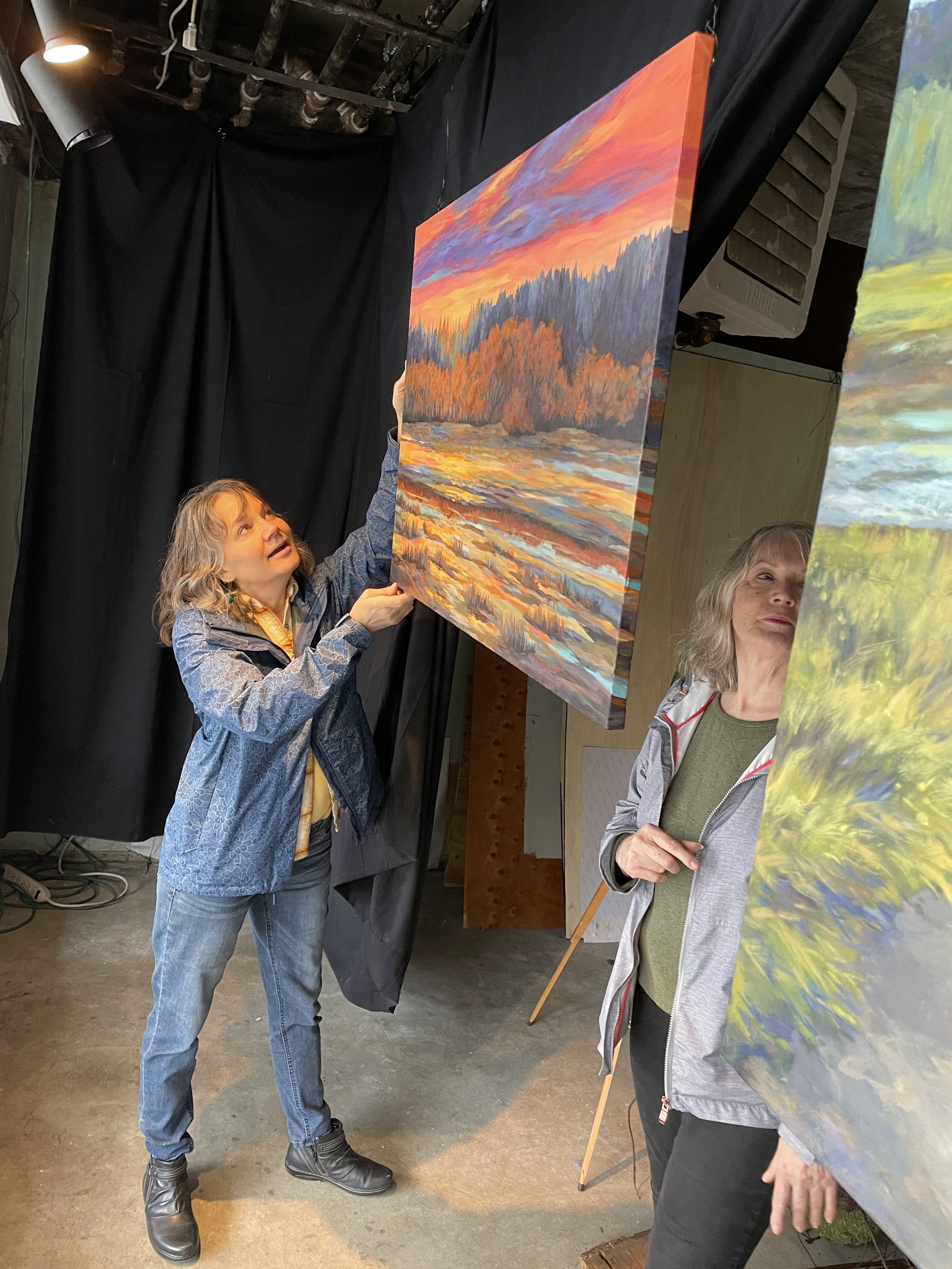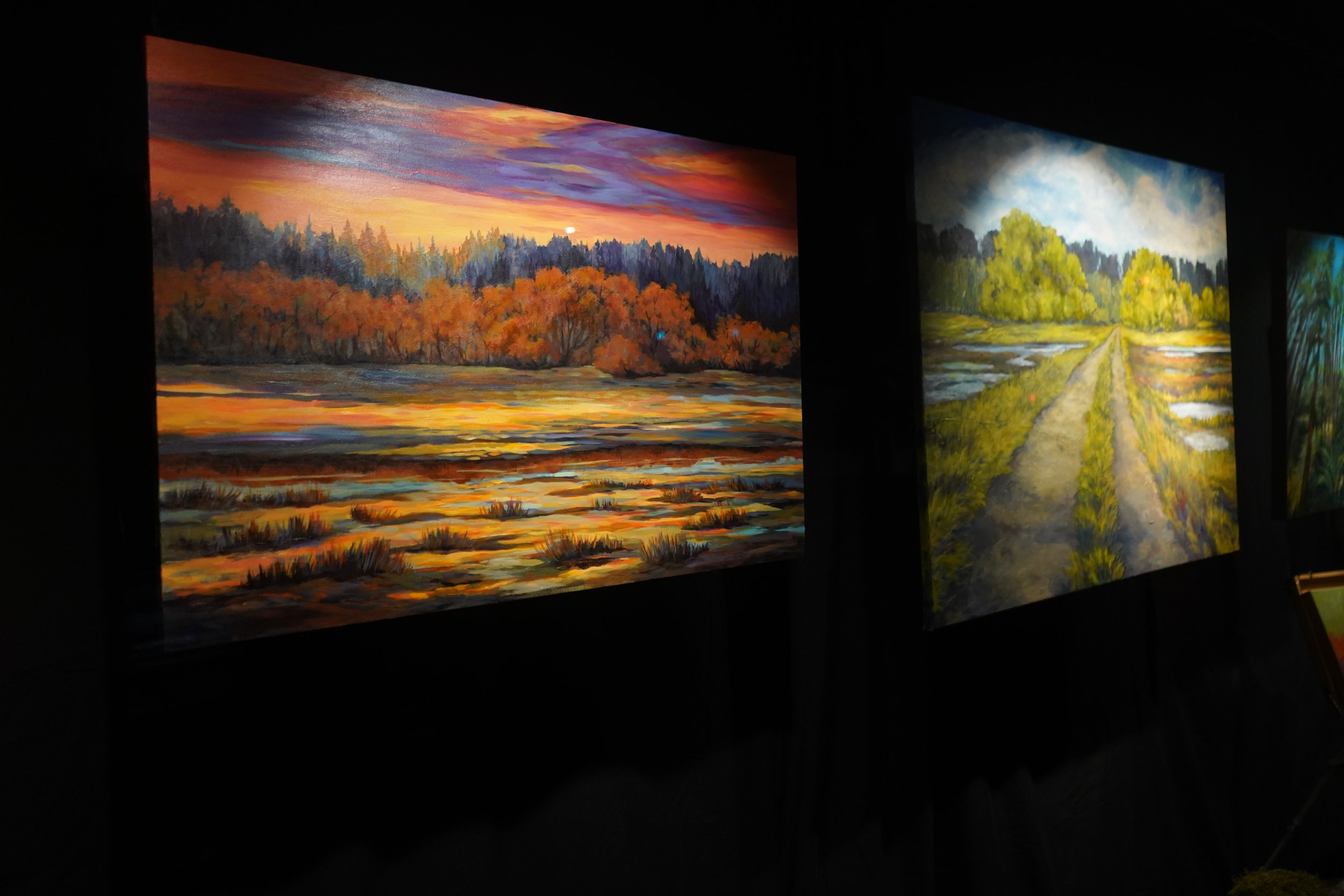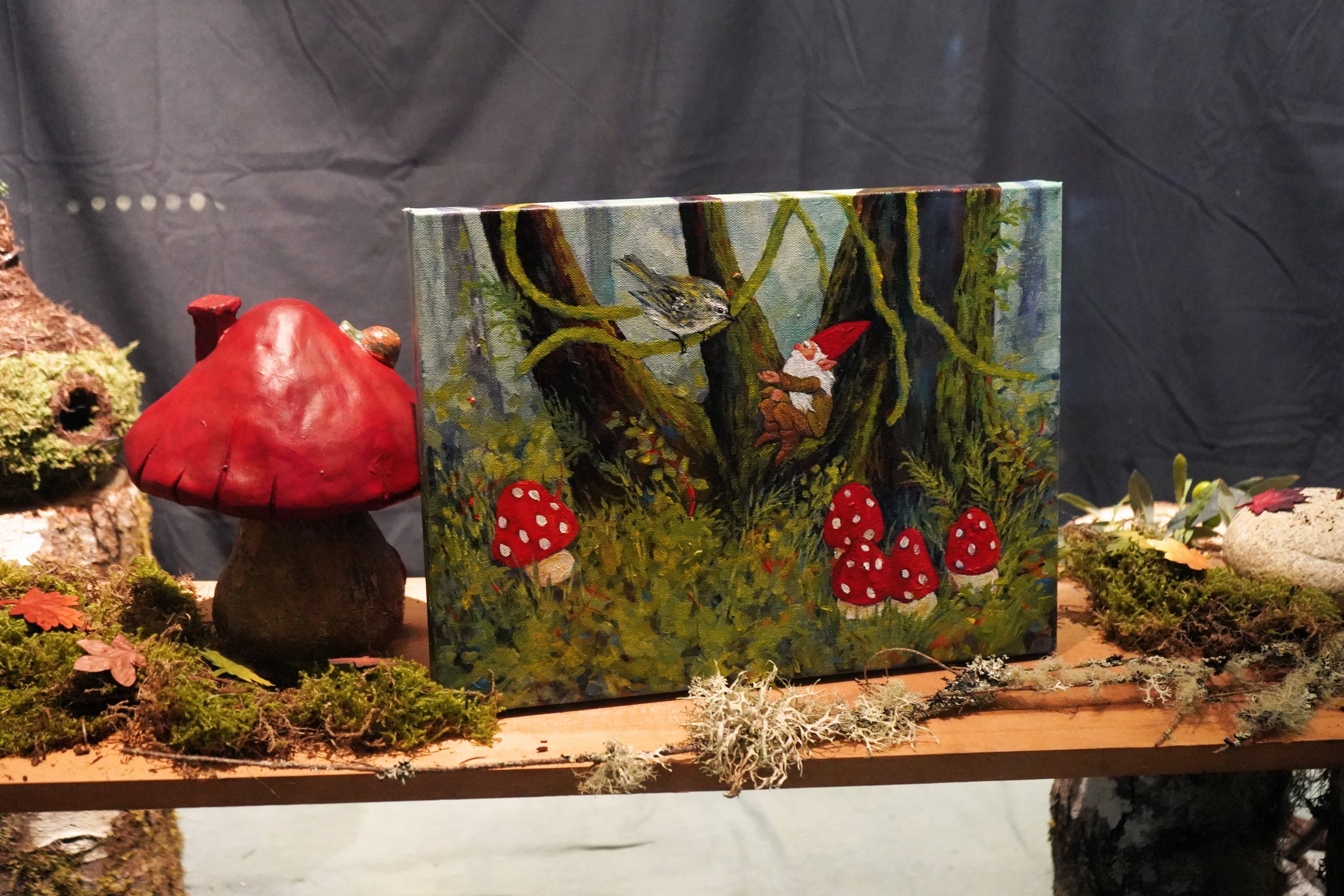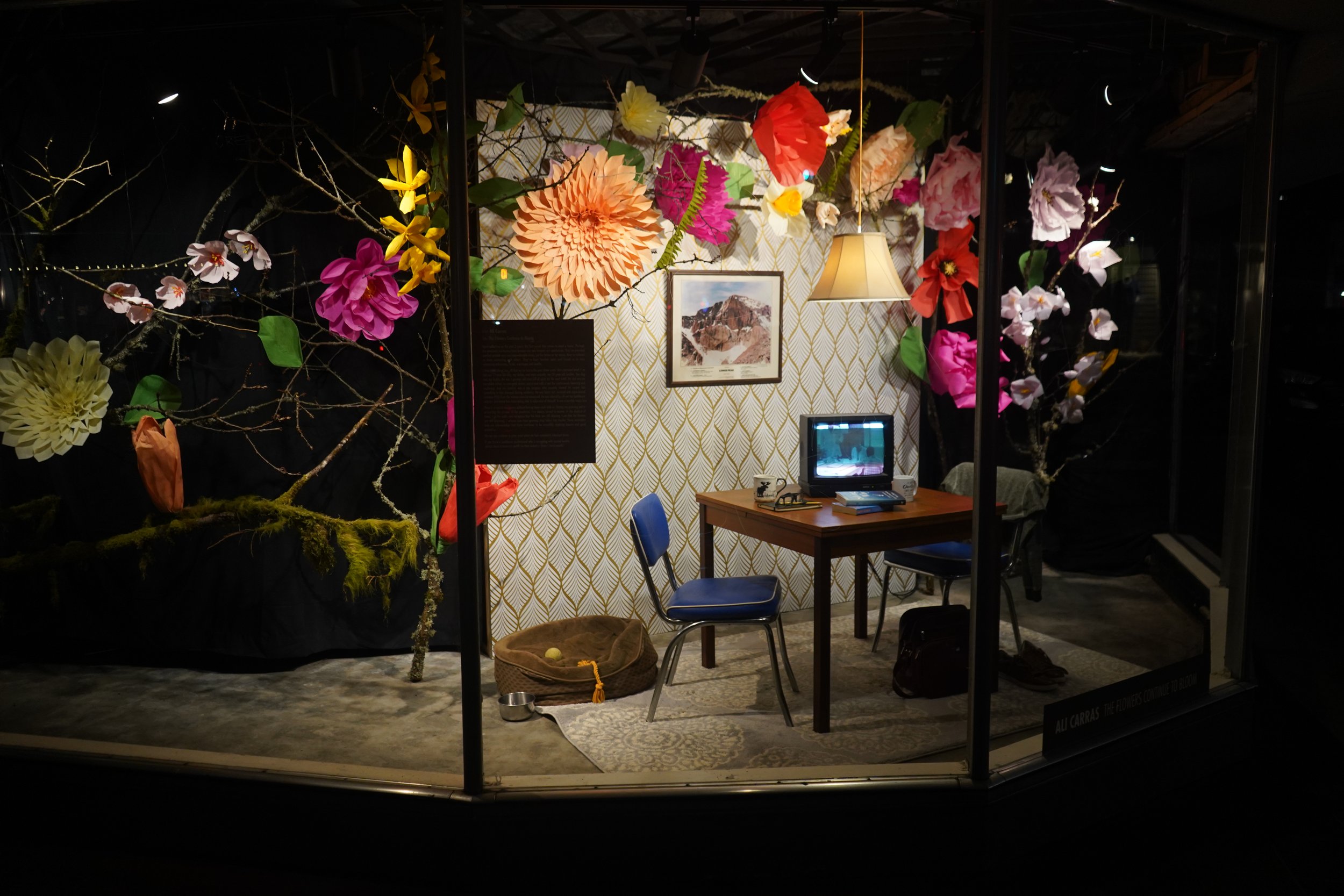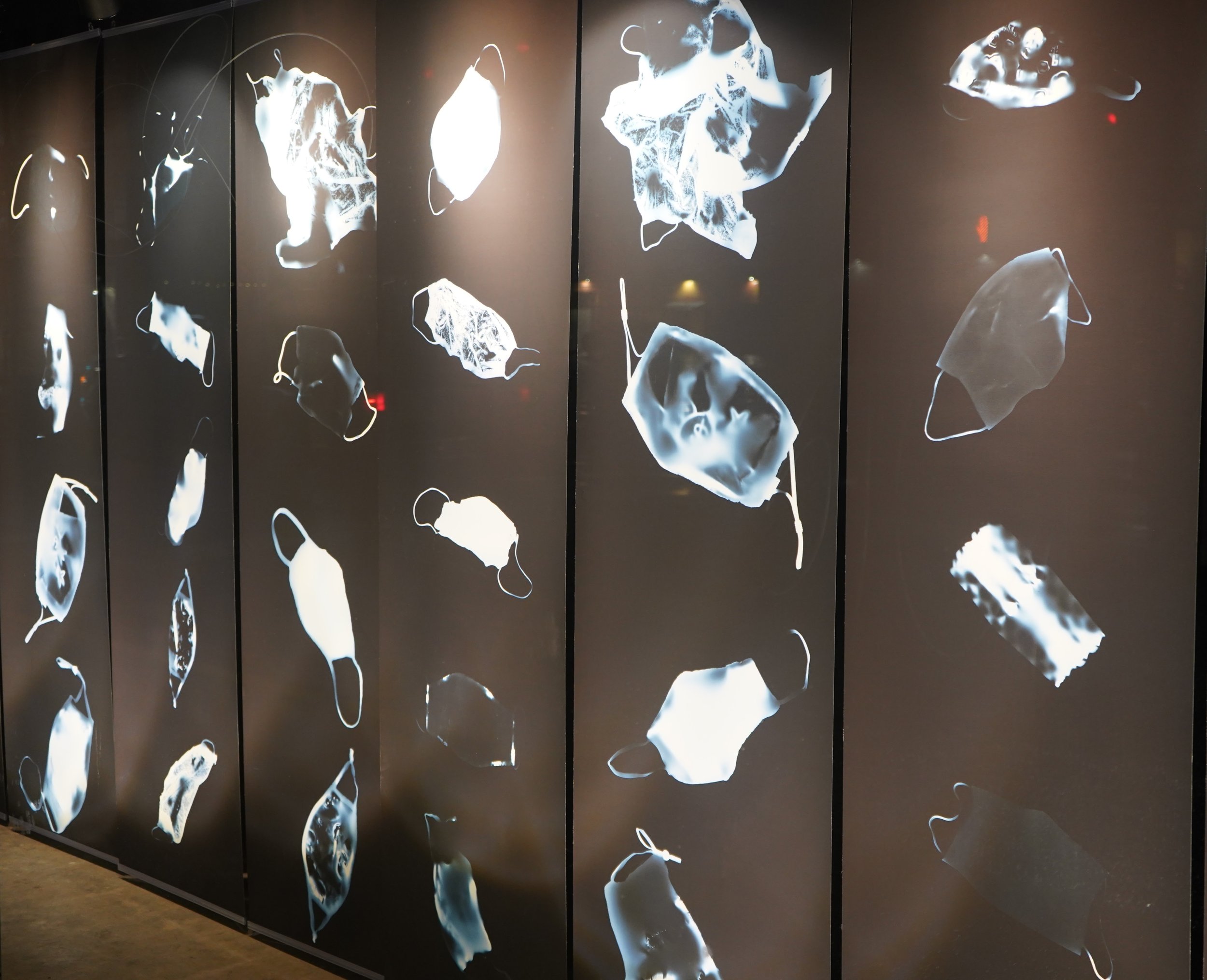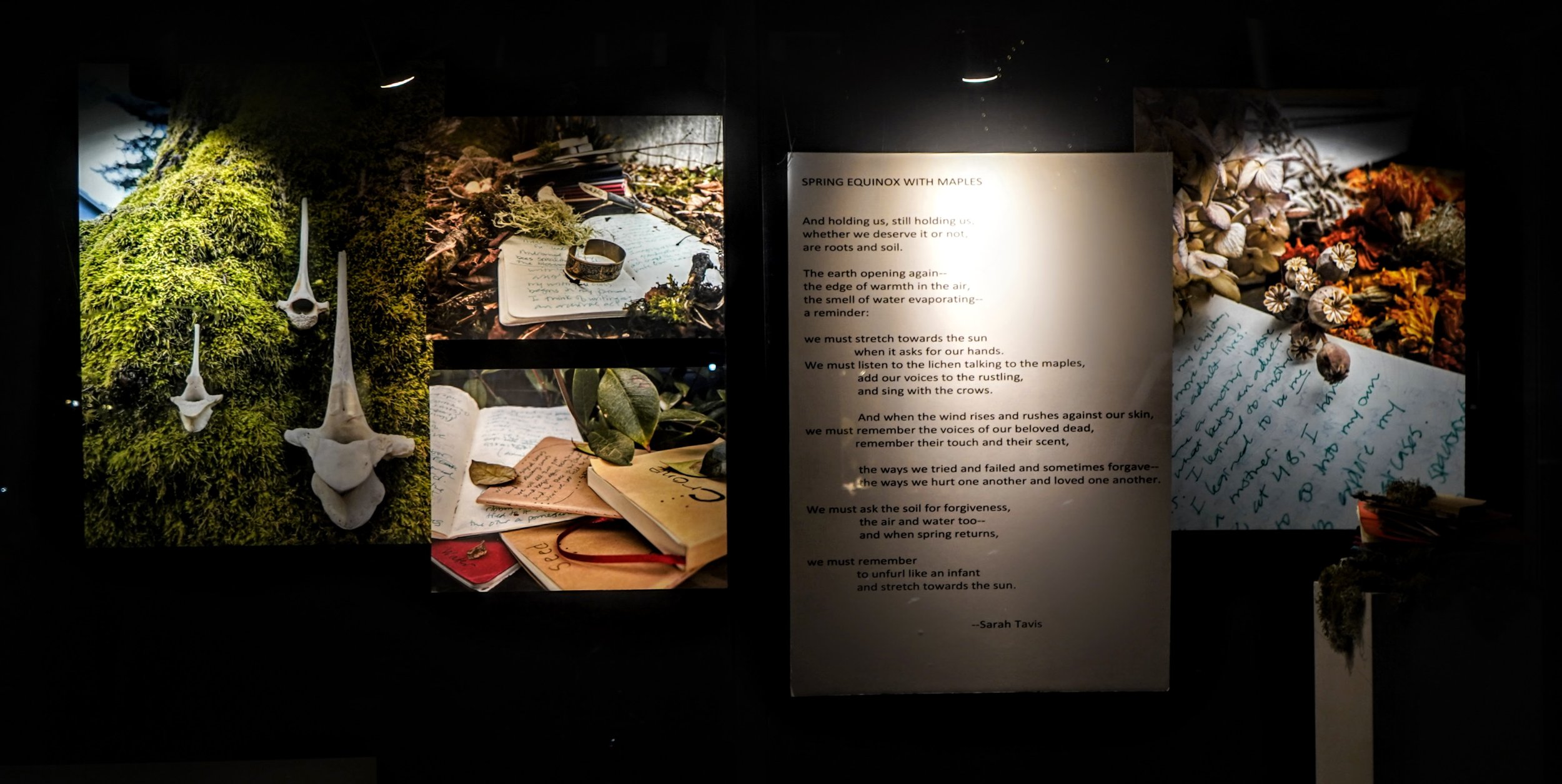“Things I’ve Discovered…” Exhibition Opens April 24
Olympia Artspace Alliance (OAA) announces “Things I’ve Discovered”—a new exhibition by local artists that will be on view now through July 31, 2023, in the windows of the Goldberg Building at Capitol Way at Fourth Avenue, downtown Olympia.
The exhibition features work from Steve Davis, Peggy Wilson, Ali Carras, Sarah Tavis and Didi Herron.
OAA invited artists to reflect on our shared experience of the last three years by proposing artwork that explores stories of beauty, hope, vision, love and loss. Proposals were selected through a jury process. They sought innovative work that will capture the attention of people walking through the streets of downtown Olympia.
Window A—Sylvan Forest of Solace, comfort and Discovery in Times of Stress
Peggy Wilson and Deirdre Herron
Peggy Wilson works in semi-impressionistic style in oils and acrylic and watercolor. Peggy submitted the following statement about her installation, “Things I’ve discovered in the past three years: I have discovered new reserves of resilience and endurance. I have always found peace and comfort in the quiet of nature with only the sounds of wind through the trees, water over rocks in a stream, bird calls and frogs croaking. These things inspire my art. I meditate as I paint and try to create a sense of what I’ve seen and felt. My imagination also leads me to envision wee gnomes living in big hollows in ancient moss-covered trees keeping company with other forest creatures. Art, imagination and faith allowed me to find solace, to endure and even thrive in many ways these past few years.”
Peggy said, “I was born into an artistic family. My Dad was an artist and taught all of his kids to draw and see and appreciate nature and animals. We moved quite a bit when I as a kid, always to rural areas. My siblings and I spent much of our time outdoors hiking and exploring. My art is an expression of my love of color and light and of nature. I work in a semi-impressionistic style in oils and acrylic and watercolor. I have taken classes and studied with artists I admire such as Stan Miller, Bill McEnroe and Ned Mueller. My work has been juried into multiple regional shows where I have won awards. My work has been shown in galleries in Spokane, Ocean Shores, Gig Harbor and is currently represented by Childhood’s End Gallery in Olympia and Trails End Gallery in Chewelah, WA.
Didi Herron’s paintings revolve around the relation of art to play, our connection to the natural world and the use of color.
“Sylvan forests of solace, comfort and discovery in times of distress.”
Herron said, “Growing up in Washington as a child playing in the woods, my paintings reflect my connection to nature and the Pacific Northwest. I found great solace walking in the woods during the pandemic, feeling both a sense of discovery as well as a newfound spirituality. With time slowed down and life simplified my eyes were opened in a new way to nature, and it has influenced my art. I found a reconnection with the beauty of the Northwest, specifically Olympia and surrounding areas. The lush green forests, alive with multitudes of ferns, mushrooms, and trees with electric green moss, captured my imagination, filling me with inspiration. I discovered a new appreciation of what we have right here in the woods of the South Sound, noticing things that have been right in front of me all along, like mushrooms hiding under the leaves, hollows where animals or gnomes might live. The changing of the season showed me the beauty of loss, hope and regeneration.”
“A Northwest native, I have been painting for over 30 years, and grew up in a family of artists. My paintings revolve around the relation of art to play, our connection to the natural world and the use of color.
My art has been exhibited and collected locally and nationally, and I am currently represented by RiverSea Gallery in Astoria, Oregon.
Growing up in Washington as a child playing in the woods, my interest in landscapes, trees and mountains reflect my connection to nature and the Pacific Northwest and the solace nature provides us.
Art for me functions as play, it is in play when we release our imaginations, make intuitive decisions and are free.”
Window B—The Flowers Continue to Bloom- Ali Carras
Ali Carras’s installation is called, “The Flowers Continue to Bloom.”
Ali Carras is a mixed-media artist based in Olympia. Carras’ installation is called “The Flowers Continue to Bloom” and here is part of her artist statement, “Upon reflecting on the past 3 years, the first visual that comes to mind is home. Through the pandemic our homes have become our safe havens, our sanctuaries. They've provided comfort amidst scary and unpredictable times, yet for better or for worse, they've isolated us from connecting with others. They've kept families apart and forced us to miss witnessing milestones, births, marriages and deaths.” I then think about loss. All that we've lost in the past three years. On a personal level, I've lost our 17-year-old dog, my father, and most recently, my 37-year-old brother. Our dog was our buddy. He was a grumpy old man full of spirit for his next meal. My dad was an incredible father, an energetic doctor, and a man with a zest for continuously learning and exploring. And my brother was a top surgeon who recently started his career, but something in him changed during residency. He was burnt out, stressed and experienced extreme PTSD from the intense cases he witnessed. He was adored by all yet the healthcare industry prevented him from being able to take care of himself. It was a terribly tragic loss.
There is a void in our homes without having these souls with us. During my grieving and in processing the stresses of the pandemic, I've always turned to nature. In the darkest of times, I go for walks and recognize that the birds are still chirping, I see that the flowers are still blooming. I witness new trees growing atop fallen tree trunks. These reminders help me acknowledge that there continues to be incredibly inspiring beauty and good around us.
We, too, can continue to grow even when we feel completely knocked down.
If you know a healthcare professional who is struggling with mental health, please share a resource specific to their industry: https://tend.health/
Window C—Steve Davis’s work is titled, “Pandemiglyphs.”
Steve Davis’s work is titled, “Pandemiglyphs.”
Steve Davis is a documentary portrait and landscape photographer and a long-time Olympia resident. Davis’ installation is called Pandemiglyphs. “From the spring of 2020 onward, I have been collecting discarded face masks from the streets of Olympia. I eventually collected a sack full of masks, which I envisioned using to create photograms. Photograms are camera-less photographs created by exposing light to photo-sensitive material, masked by, in this case, masks. These unique silver halide prints were then scanned and enlarged digitally. My goal was to present these images as markers, specimens, and the detritus left behind from this global, shared experience,” he said.
Davis’ work has appeared in American Photo, Harper’s, the New York Times Magazine, and Russian Esquire and is in many collections, including the Houston Museum of Fine Arts, the Seattle Art Museum, the Santa Barbara Museum of Art, and the George Eastman House. He taught at the Evergreen State College for many years and now teaches photography at South Puget Sound Community College. Davis is represented by the James Harris Gallery in Seattle. More of his work can be seen at https://davis.photo.
Window D—Spring Equinox with Maples- Sarah Tavis
Sarah Tavis has been a Texas punk girl, a teen mom, a graduate of the Jack Kerouac School of Disembodied Poetics, a bookseller, a letterpress printer, and a teacher of writing. Tavis’ installation is titled “Spring Equinox with Maples.”
She said, “My writing begins in journals and moves to the blank wall in my studio. I fill this process wall with photos and images, index cards full of notes, and objects I find on walks or in the garden—feathers, bones, seedheads, whatever calls to me. Writing is an archival act. I collect moments through close observation and string them together, like a series of snapshots or film stills. For this project, I spent time with the maple trees I observe daily from my studio. I know their residents intimately—the crows, juncos, robins, and starlings; the squirrels who nest high in the canopy; the moss, lichen, and fungi that grow on bark and in duff. I brought with me artifacts that called to mind the themes of the artists’ whose work I am writing towards: a brass dish that belonged to my Mimi, who died almost a year ago at age 94; a bracelet with an etching of the sun, and a knife embossed with an image of the Buddha—both belonged to my Granny, whose impulse to collect and archive was passed along to me. I brought bones of elk, sea creatures, and birds found on walks and in the garden after a winter spent decomposing under the raspberries. I brought dried flowers and the skeletons of leaves, abandoned nests, and words, so many collected words, fragments spilling onto the covers of my journals—three years’ worth of journals, reflections from when our personal circumferences shrunk so drastically, and my observations focused on the small and the daily, on grief and transformation.
The installations you see--brought to life by artists reflecting on their own discoveries over the past three years--inspired the words and images I created. So many kinds of loss. But also, for some, time to slow down and observe our surroundings and habits: city streets, woods behind our homes, our kitchens, and our families—whether through memories of our beloved dead, or from a distance and through a screen, or up close (sometimes way too close). I hope this collection of art, and the artists who created it, inspires you to reflect on what you have discovered during these past three years.”

